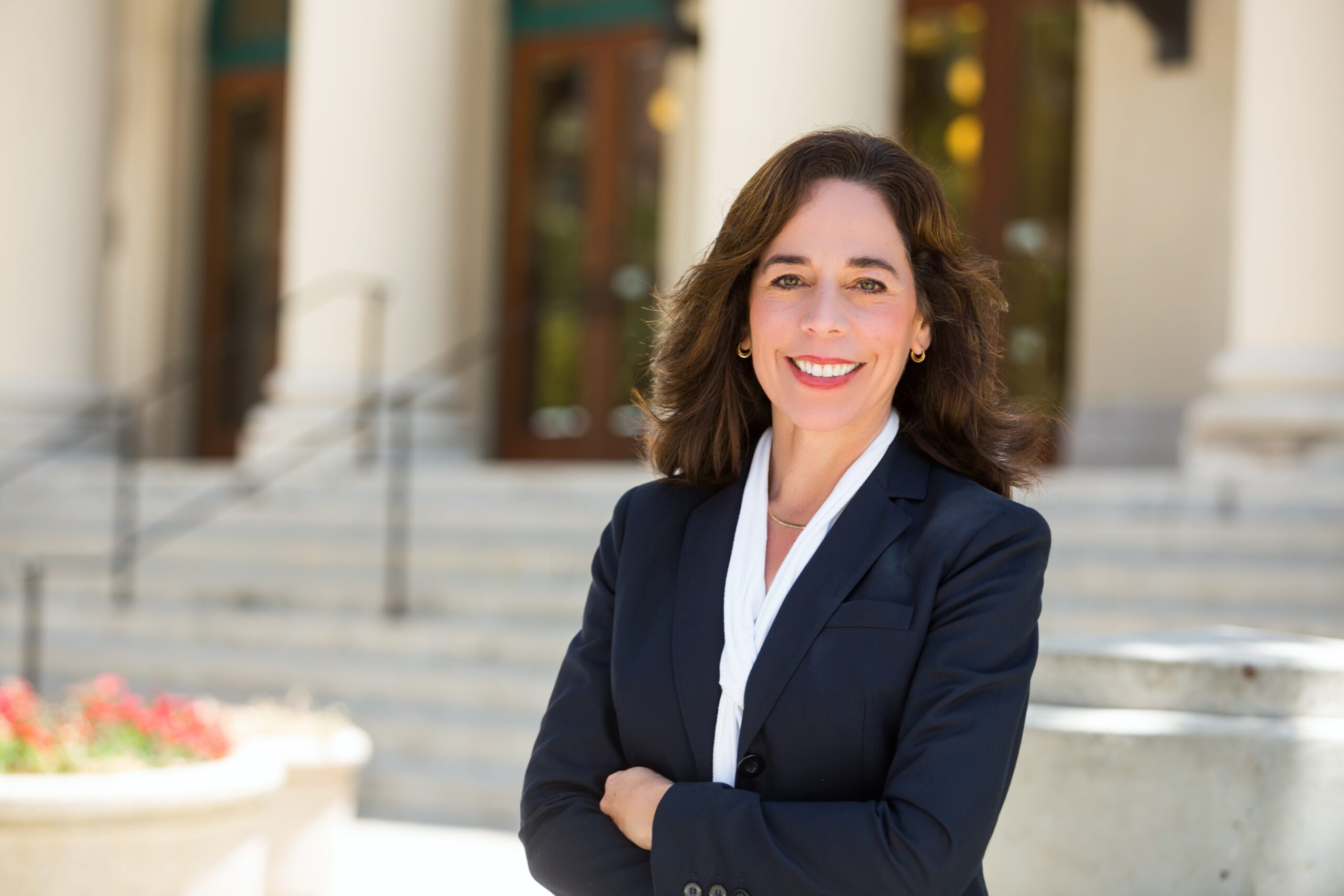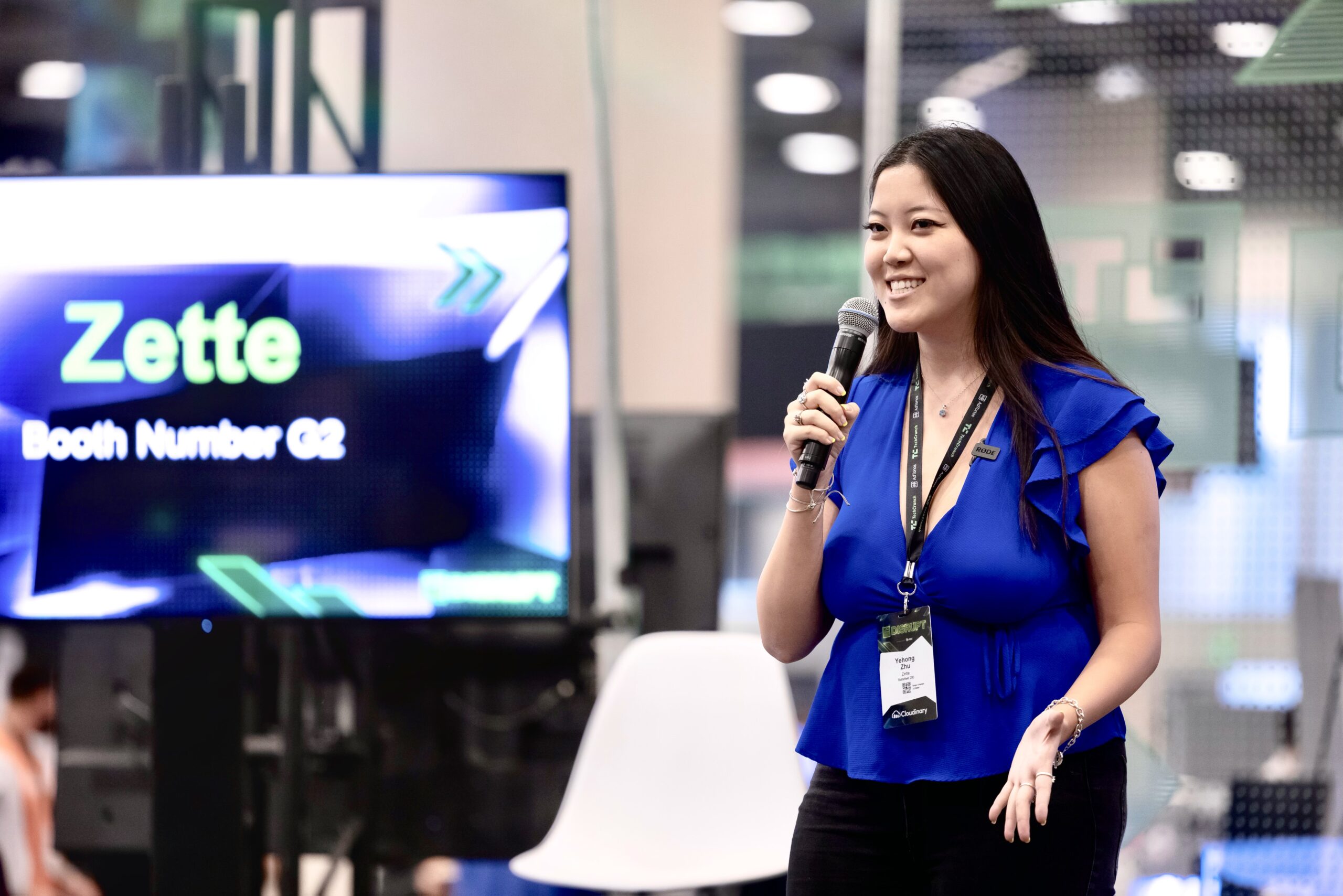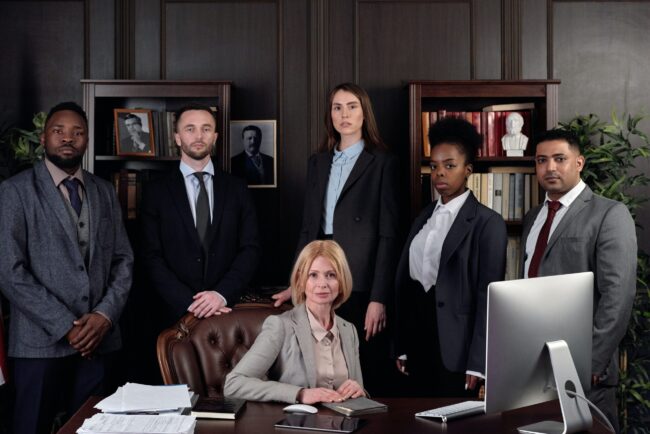
According to the Center for American Women and Politics, in 2023 there are only 25 women represented in the U.S Senate, out of a total of 100 Senators. In the House of Representatives, there are 125 women, out of a total of 435 seats. Clearly we are nowhere near parity, which makes you wonder how different our national policies would be if we had more women in political leadership, not just at a federal level, but also state and local levels.
In additional to the gender disparity, CAWP breaks it down by race. Of the 150 women in the current Congress:
- 10 identify as Asian American/Pacific Islander
- 29 identify as Black
- 19 identify as Latina
- 2 identify as Native American/Alaska Native/Native Hawaiian
- 1 identifies as Middle Eastern/North African
- 93 identify as white
When we don’t see an equal representation in our leadership, how can our policies truly reflect the diversity of thought and lived experiences?
Former California State Assemblymember Mary Hayashi is someone who understands the stakes first hand, as a trailblazing women herself. She has just released her new book ‘Women in Politics: Breaking Down the Barriers to Achieve True Representation‘ (MKC Press, October 25, 2023) at a moment when it is clearly needed, to inspire more women and girls to get off the sidelines and jump into the political arena.
In ‘Women in Politics’, the award-winning author and healthcare leader offers a riveting exploration of the strides made by women in government. The book features inspiring stories of trailblazing women in leadership, including Karen Bass, Connie Perez-Andreesen, Lauren Book, Laphonza Butler, Dianne Feinstein, Jean Fuller, Celinda Lake, Fiona Ma, and more.
This essential, contemporary analysis bridges the gap between past and present, blending Mary’s personal journey as an Asian-American immigrant and former California State Assemblymember with the inspiring stories of trailblazing women in political leadership.
Featuring interviews and insightful discussions, Mary brings to life the trials and triumphs of these women, showcasing their invaluable contributions to political landscapes and the transformative power of their perseverance. Her work sheds light on the ongoing struggles for gender-political parity and serves as a call to action: we must actively participate in shaping our democracy.
Throughout her own political career, Mary Hayashi spearheaded substantial reforms in mental health services, championed gender equality, and forged powerful, unprecedented partnerships for social causes that previously had no financial or public backing. Recognized as “Legislator of the Year” by the American Red Cross and the California Medical Association, Mary has also been featured on Redbook’s “Mothers and Shakers” list and Ladies’ Home Journal ’s “Women to Watch.” Mary remains a steadfast proponent of social justice expansion and the rights of underrepresented communities.
As we gear up for the 2024 Presidential election, we had the opportunity to speak with Mary about the groundbreaking work she has done to see better representation for the Asian-American community in a range of healthcare topics, and the advice she would give to women who are hesitant to get into politics.

What made you decide to first get into politics?
Growing up, I never imagined myself as a civic leader. As a young girl named Mi Kyung in the 1970s farming village of Gwangju, South Korea, I had no concept of representative democracy.
In traditional Korean culture, women are to be seen and not heard. We are each raised to be respectful “good girls,” to make an excellent marriage match, and then to raise children: a new generation of silent “good girls.” Culturally, I was not encouraged to be strong and assertive, so the behaviors required to successfully run for and serve in public office do not come naturally to me.
But my older sister died by suicide at seventeen, and this experience led me to lifetime advocacy work for increased mental health services and treatment. In 1993, I founded a national organization that advocates for Asian American women’s health issues. Then, in 2004, I had an opportunity to work for then Assemblymember Darrell Steinberg, who used his platform as a legislator to advance causes he deeply cared about. After seeing firsthand what Darrell achieved, I was inspired to move from an advocate influencing legislators to a legislator with the power to implement change.
My involvement in public service grew organically out of my innate desire to fight for those falling behind, being forgotten, or unable to advocate for themselves—for people just like my sister.
Who have been your role models in leadership growing up? Who were you inspired by?
In 1986, I was a college freshman at California State University, Long Beach, and Women’s Empowerment was at its peak. As a young college student, I wasn’t overly aware of the advancement of women happening all around me. I signed up for a Women’s Studies class, thinking I would be studying how to be a “good woman,” just as I had learned to be a “good girl.” Instead, I read countless stories about fiercely independent women written by great feminists like Virginia Woolf, Sylvia Plath, Gloria Steinem, and Susan Faludi.
After years of being a “good girl,” of being raised with the notion that I would be nothing more than a wife and mother, and after assimilating to a new culture where women were allowed to have their own lives and pursue careers, it finally dawned on me: I could make a career for myself and make a difference for others.
In addition to reading about women’s literature, I was inspired by women of color social justice activists, including Elizabeth Toledo, former Vice President of Planned Parenthood Federation of America, and Byllye Avery, founder of the National Black Women’s Health Project.
Was there one particular issue or moment in your life that made you realize the importance of and need for more diversity and more women in political leadership?
Representation is important not only for gender equity; it also matters when it comes to other underrepresented groups. I learned this lesson early in my career when I was working as an advocate for Asian American health.
In the 1990s, Vice President Al Gore championed a tobacco cessation campaign. Its mission was to prevent children from smoking, including initiatives such as reducing tobacco marketing to teens and restricting the accessibility of cigarettes. The Centers for Disease Control and Prevention (CDC) pledged massive support for implementing these national tobacco intervention programs, including running a comprehensive study on Americans’ tobacco use in 1994.
The study found that only 14 percent of Asian Americans were smokers, the lowest among all racial groups. But given my personal experience in the Asian community, I knew that this data was not accurate. I also knew, since studies such as this dictated funding for national educational and health programs, that Asian Americans would miss out on such resources if it were believed they were not an at-risk group.
Upon further investigation, I discovered that the CDC’s survey had been conducted in English, only by phone, and used a small sample size. So, I raised $75,000 and partnered with the American Cancer Society to create our own survey. We used the same questions the CDC study used but translated them into Korean and Vietnamese, two of the most common languages spoken by Asian Americans.
This time, the sample size and selection sufficiently represented the Asian population, and we hired professional, bilingual interviewers to conduct the surveys in each respondent’s preferred language. Eighty-nine percent of the surveyed Vietnamese and 82 percent of the Koreans asked to take the study in their native language, not English.
As I expected, the results were substantially different from the CDC studies. For example, our survey found that 34 percent of Vietnamese and 31 percent of Korean American men currently smoked, compared to the CDC’s study, which found that 20 percent of the same demographic smoked. Even more interesting was the finding that Asian American men smoked more than Caucasian men, a reported 20 percent.
Not only was there a smoking problem in the Asian American community, but the survey uncovered that awareness and education were also severely lacking. Roughly 20 percent of those surveyed said they were unaware of the deadly effects of smoking. Thirty-four percent of Vietnamese respondents said they didn’t know tobacco was addictive.
In 1996, I began traveling to Washington, D.C., to lobby Congress for better Asian American data collection. The representative for California’s eighth district, Rep. Nancy Pelosi, supported the effort by starting a letter-writing campaign, urging Congress to support the inclusion of Asians and Pacific Islanders in data collection efforts by the federal government, including the CDC. Anna Eshoo, Patsy Mink, and several other female legislators supported the action and even met with me one-on-one to discuss our concerns and carry our message to Congress.
The non-representative data collection methods used by the CDC failed to identify a significant health epidemic in the Asian community. Fortunately, the CDC quickly learned from its harmful oversight, and in 1998, I launched an entirely new study in partnership with the CDC’s Office on Smoking. This time around, the study focused on the age at which Asian Americans began smoking, which we found by interviewing Asian youth between the ages of thirteen and eighteen at venues like cultural youth clubs and ethnic language schools.
Through my non-profit organization’s efforts and partnerships, we built a comprehensive and accurate picture of smoking among Asian American communities. We ensured adequate allocation of public resources to education and health programs.
Without representation, the distribution of these valuable resources would have skipped over the Asian community, and the genuine issue of smoking amongst Asian Americans would have gone entirely unaddressed. This is precisely why diverse representation matters.
On June 7, 1999, a coalition of other Asian American health advocates, including Rep. Nancy Pelosi, Anna Eshoo, and I witnessed President Clinton’s signing of Executive Order 13125, which established the first White House Initiative on Asian Americans and Pacific Islanders. This executive order mandated that all federal government programs include Asian Americans in their supporting research efforts and data collection.
Standing a few feet from President Clinton in the Oval Office was a surreal moment. By taking action and advocating for policy changes, I championed the inclusion of Asian Americans in the equitable distribution of public funds. This effort marked significant strides toward equality in areas such as health, housing, employment, and other programs.
We are gearing up for what is said to be a highly contentious presidential race in 2024 (as they all are!). In your political expertise, what do you see are the most significant issues we should be focusing on?
I believe the U.S. Supreme Court’s decision in Dobbs v. Jackson Women’s Health Organization, which no longer guarantees reproductive healthcare for women, will significantly impact the 2024 election.
Words like representation and diversity are used quite a lot these days. But can you tell us the impact that happens when we see diversity in political leadership especially?
When I interviewed Amanda Hunter, executive director of the Barbara Lee Family Foundation, she described the organization’s most recent focus group research. When participants were asked to picture a governor, an overwhelming majority said they envisioned a man. This phenomenon is a version of what’s commonly known as “unconscious bias”. This imagination barrier is what keeps voters from envisioning women and women of color in elected offices. We cannot imagine seeing a different kind of person doing these jobs.
When I joined the California state legislature, I was once again the foreign “new kid” who challenged the Imagination Barriers of others. By that time, my Korean accent was gone; I had even glossed over it with a touch of Southern California “valley girl” inflection during my teenage years in Orange County. I was far more American than I was Korean. Plus, I had been working for nonprofits and other political interests for years. I was just as accomplished and qualified as the rest of the people in the state legislature, but I looked different.
Most people I interacted with had little prior experience with Asian women—at work or in their personal lives. For many of them, their experience with Asian women was in stereotypical roles: their server at a restaurant, the checkout person at the grocery store, or the caregiver in a nursing home. Hardly any of the men I regularly encountered in the State Assembly were used to engaging with an Asian woman as an intellectual peer.
They were unfamiliar with my background and my beliefs. Some of them probably even wondered how well I spoke English. This made them very uneasy when attempting to discuss policy issues with me. My mere presence challenged their Imagination Barrier.
Healthcare is something that affects everyone, and mental health specifically is an area that you have worked extensively with in terms of policy. Can you share more about this?
During my first term in the Assembly, I authored AB 509, which led to the creation of the California Office of Suicide Prevention. In 2004, I worked with Rusty Selix, a longtime mental health leader and lobbyist, and Assemblymember Darrell Steinberg to pass Proposition 63. The groundbreaking Mental Health Services Act would impose a 1 percent tax on incomes of $1,000,000 to fund mental health programs; a portion of that money would be dedicated to prevention and early intervention programs focused on detecting and treating mental illness before it becomes debilitating.
In November 2004, 54 percent of California voters approved this measure on a statewide ballot. It was such an exciting time for all those who had worked so hard for mental health, and we celebrated this tremendous victory for a cause that had been so stigmatized and silenced. Through its passage, the proposition created the Mental Health Services Act, providing unprecedented funding for county mental health services to expand and improve care for children and adults in need.
Shortly after the passage of Proposition 63, Governor Arnold Schwarzenegger appointed me to serve as a Commissioner to the California Mental Health Services Oversight and Accountability Commission, which monitored and guided the state’s implementation of Proposition 63. Since 2005, Proposition 63 has generated twenty-nine billion dollars for mental health programs.
Can you tell us about some of the partnerships you formed in order to champion social causes, that previously had little to no funding?
In the early ’90s, there was a great void in the Asian American community concerning women’s health advocacy. Not only did I need to learn more about why my sister couldn’t ask for help, but I also wanted to do something to help others who were similarly struggling with mental illness. I refused to forget those who were suffering, and I wasn’t going to let others forget about them, either. It was the beginning of my lifelong advocacy for mental health and my passion for improving the overall health of Asian women in America.
It was an exciting time in San Francisco; there seemed to be a nonprofit organization for every cause imaginable. Barely ten years into my life in the United States, I enthusiastically absorbed all of it, meeting countless individuals who inspired me even further to make a difference.
Those few years learning from powerful female leaders were my most formative, shaping me into the leader I am today. But those years also showed me that, while there were many influential female leaders in the African-American and Latina communities, there was a shortage of representation for Asian American women. So, although I had no idea where to begin and had only three years of experience working for a nonprofit organization, I decided to take the next significant step for my sister and all the voiceless Asian women and families. In 1993 I founded the National Asian Women’s Health Organization (NAWHO).
Though I began with no resources of any kind, I received enormous support from feminists like Elizabeth Toledo and Byllye Avery, founder of the National Black Women’s Health Project. Both women agreed there should be a national voice for Asian American women’s health issues, and they introduced me to potential donors and political supporters. They also invited me to serve on leadership boards, where I learned invaluable advocacy skills.
During the next few years, I grew NAWHO into an organization of thousands, all committed to ending healthcare disparity among ethnic and racial groups in America. Through engagement efforts like our National Leadership Training Network, which brought several hundred Asian American health care advocates to Washington D.C., we helped shape public policy for those who would have otherwise gone unrepresented. Following these successes, I established several historic national cooperative agreements and partnerships with the CDC to improve the lives of Asian American women.
While politics can be exhausting or overwhelming when there is a lot happening around the world and in our country, how would you encourage women and girls to run for office and pursue positions of leadership?
Research and anecdotal evidence both provide clear evidence that women’s political participation advances complex and emerging public policy issues, as well as results in diverse strategies for social and economic problems. Women in politics also affect the public policy issues prioritized in government. Barbara Lee, founder and president of the Barbara Lee Family Foundation, eloquently stated, “Women don’t run for office to seek fame and fortune. They run for office to solve problems.”
While we celebrate the accomplishments of women, it’s crucial to remember the longstanding systemic gender discrimination women have faced. Generations of cultural, systemic, and racial barriers won’t dissolve overnight. We’re in the midst of a profound yet still unfolding transition.
Viewing this transition through a historical lens underscores the magnitude of what we still need to overcome. In California, for example, only 192 women have served in the state’s legislature since 1911, when women were first allowed to hold office. This is out of over 4,497 total California state legislators. With this context, we’re reminded that while the numbers might improve, we have generations of inequality to compensate for.
Women of color comprise 23 percent of the U.S. population but only 11 percent of U.S. Representatives. Only four out of one hundred U.S. Senators are women of color. While we made history in 2022 with a record number of women who now serve in executive and legislative positions in 2023, we still have a long way to go to reach full gender parity.
Recruitment is one of the few tools available to us now and can be used to disrupt the vicious cycle of this gender gap. Research indicates that competent women will run for office and win if encouraged. Mentoring is another strategy to help close the gender gap in politics and achieve political parity. Studies have shown that women who have mentors in the workplace are more successful. In politics, having a mentor can be a game-changer.
The best way to answer this question is to share my interview with Laphonza Butler, US Senator and former president of EMILY’s List. I asked her what women can do to overcome these systemic barriers. Her response was quick and confident. She simply said, “Do it anyway.”
“Women tend to look at our opportunities from a place of lack,” Laphonza went on to explain. “We think either we don’t have the financial resources, or we lack a certain set of skills or experience. But we need to focus on what we do bring to the table. You have the lived experience of advocating for your aging parent in a nursing home or of working for your local school. Your journey prepares you. So, even if you lack certain knowledge or resources, do it anyway. For the rest of it, that’s what organizations like EMILY’s List are for.”
If you’re inclined to run, do not feel limited by what you lack. Instead, reach out for support and utilize the many resources available to you. Focus on what you do bring to the table. Even if you are disadvantaged compared to wealthy and well-connected male opponents, do it anyway.
If you could go back in time and tell your younger self one piece of advice, what would it be?
The journey requires momentum, tenacity, and resilience, not just one magic moment.
If you are as inspired as we are by what Mary shared here and want to read more, make sure you get a copy of ‘Women in Politics’ HERE, and follow Mary Hayashi on Instagram, Facebook and Twitter.

















